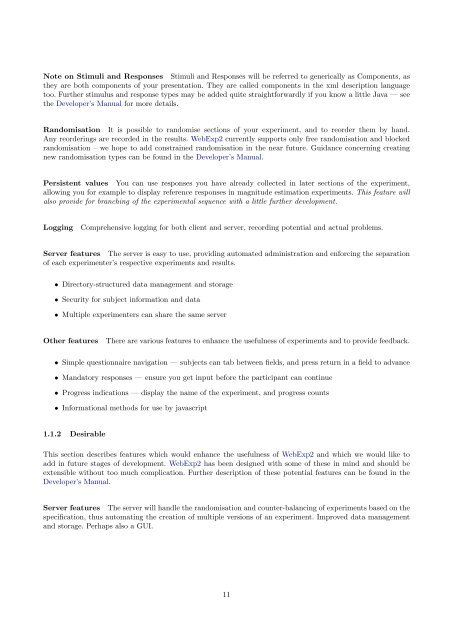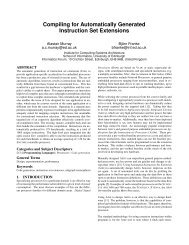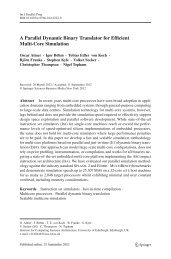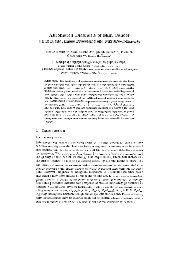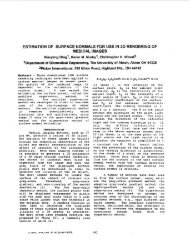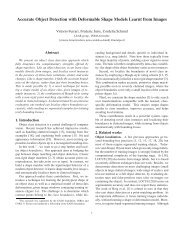WebExp2 Experimenter's Manual - School of Informatics - University ...
WebExp2 Experimenter's Manual - School of Informatics - University ...
WebExp2 Experimenter's Manual - School of Informatics - University ...
You also want an ePaper? Increase the reach of your titles
YUMPU automatically turns print PDFs into web optimized ePapers that Google loves.
Note on Stimuli and Responses Stimuli and Responses will be referred to generically as Components, as<br />
they are both components <strong>of</strong> your presentation. They are called components in the xml description language<br />
too. Further stimulus and response types may be added quite straightforwardly if you know a little Java — see<br />
the Developer’s <strong>Manual</strong> for more details.<br />
Randomisation It is possible to randomise sections <strong>of</strong> your experiment, and to reorder them by hand.<br />
Any reorderings are recorded in the results. <strong>WebExp2</strong> currently supports only free randomisation and blocked<br />
randomisation – we hope to add constrained randomisation in the near future. Guidance concerning creating<br />
new randomisation types can be found in the Developer’s <strong>Manual</strong>.<br />
Persistent values You can use responses you have already collected in later sections <strong>of</strong> the experiment,<br />
allowing you for example to display reference responses in magnitude estimation experiments. This feature will<br />
also provide for branching <strong>of</strong> the experimental sequence with a little further development.<br />
Logging<br />
Comprehensive logging for both client and server, recording potential and actual problems.<br />
Server features The server is easy to use, providing automated administration and enforcing the separation<br />
<strong>of</strong> each experimenter’s respective experiments and results.<br />
• Directory-structured data management and storage<br />
• Security for subject information and data<br />
• Multiple experimenters can share the same server<br />
Other features<br />
There are various features to enhance the usefulness <strong>of</strong> experiments and to provide feedback.<br />
• Simple questionnaire navigation — subjects can tab between fields, and press return in a field to advance<br />
• Mandatory responses — ensure you get input before the participant can continue<br />
• Progress indications — display the name <strong>of</strong> the experiment, and progress counts<br />
• Informational methods for use by javascript<br />
1.1.2 Desirable<br />
This section describes features which would enhance the usefulness <strong>of</strong> <strong>WebExp2</strong> and which we would like to<br />
add in future stages <strong>of</strong> development. <strong>WebExp2</strong> has been designed with some <strong>of</strong> these in mind and should be<br />
extensible without too much complication. Further description <strong>of</strong> these potential features can be found in the<br />
Developer’s <strong>Manual</strong>.<br />
Server features The server will handle the randomisation and counter-balancing <strong>of</strong> experiments based on the<br />
specification, thus automating the creation <strong>of</strong> multiple versions <strong>of</strong> an experiment. Improved data management<br />
and storage. Perhaps also a GUI.<br />
11


